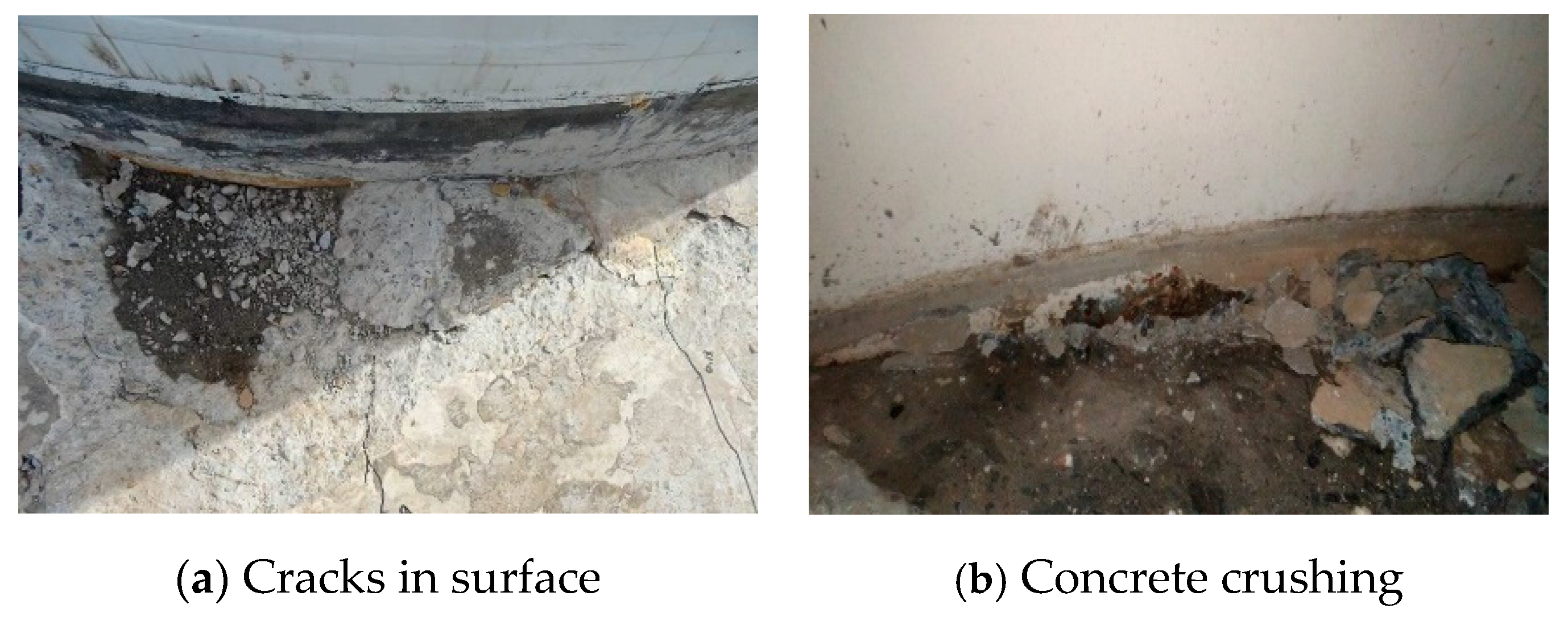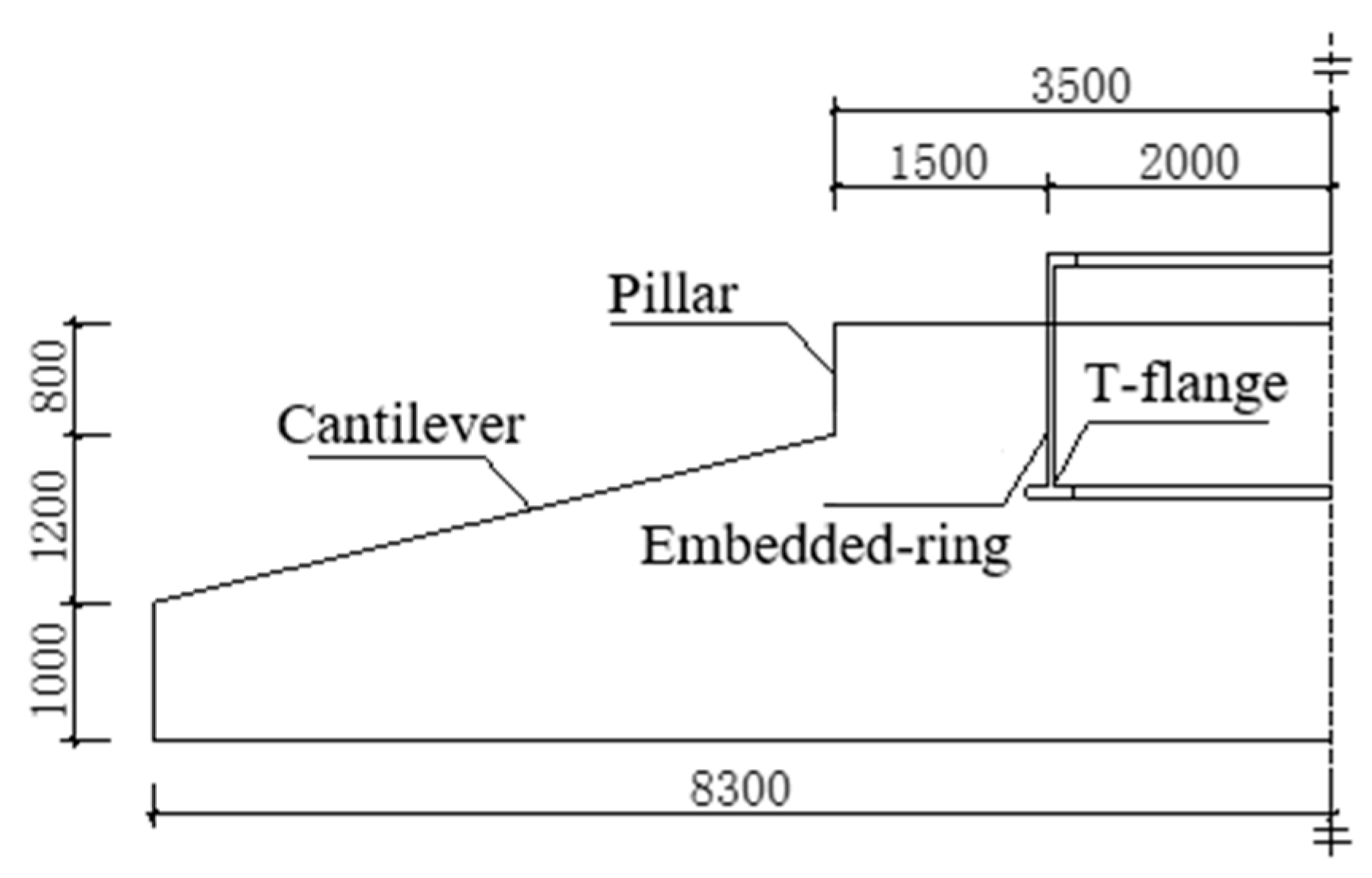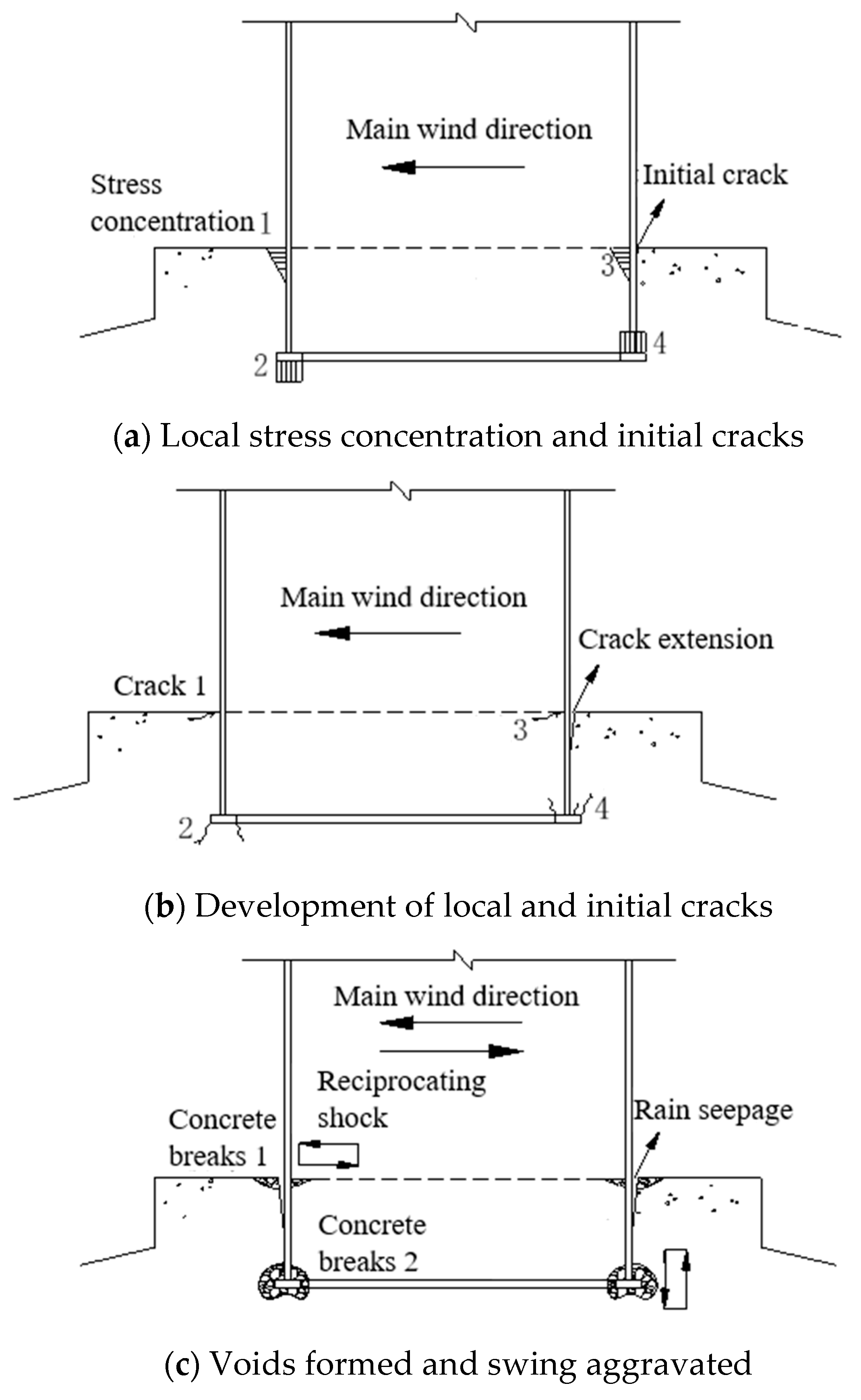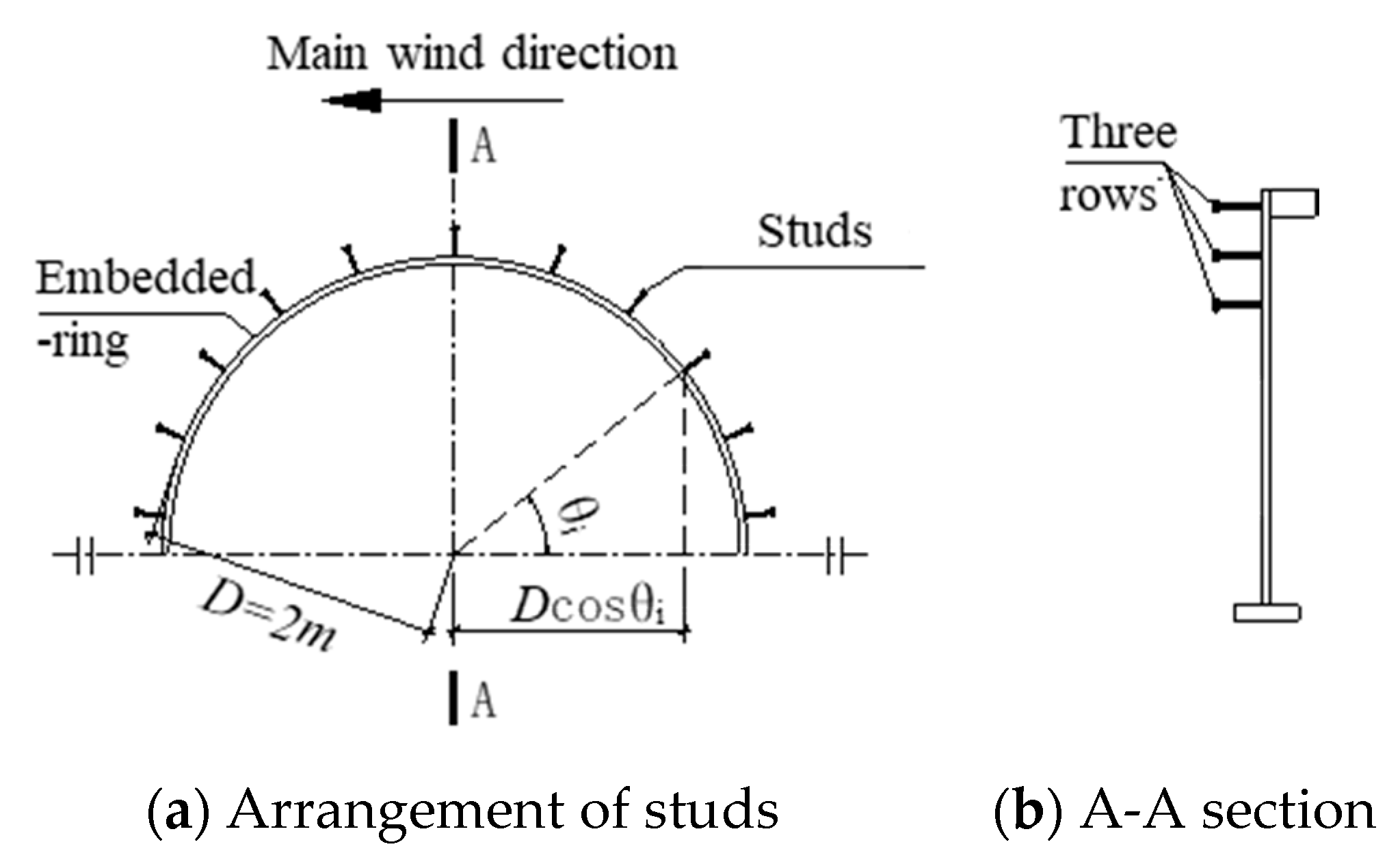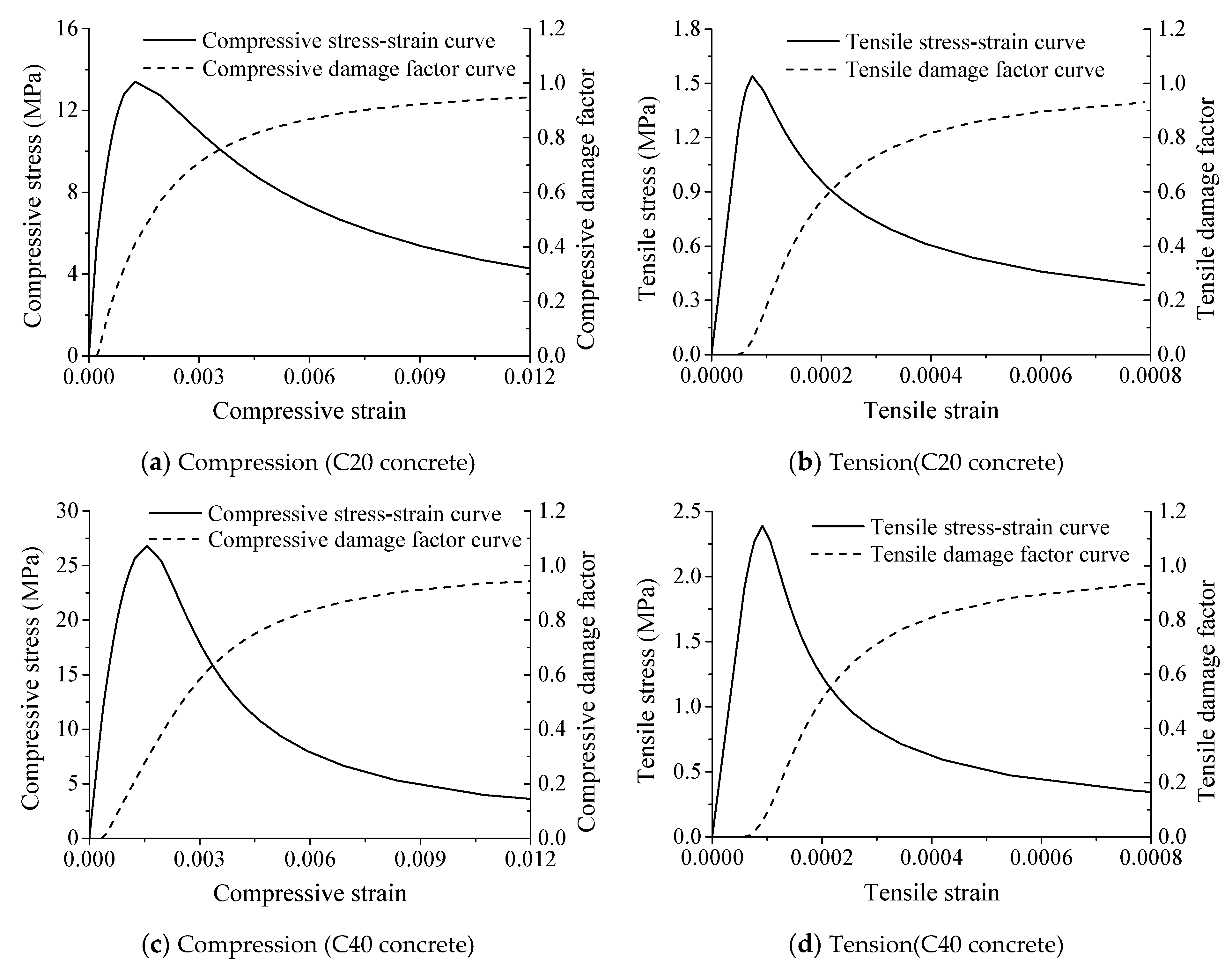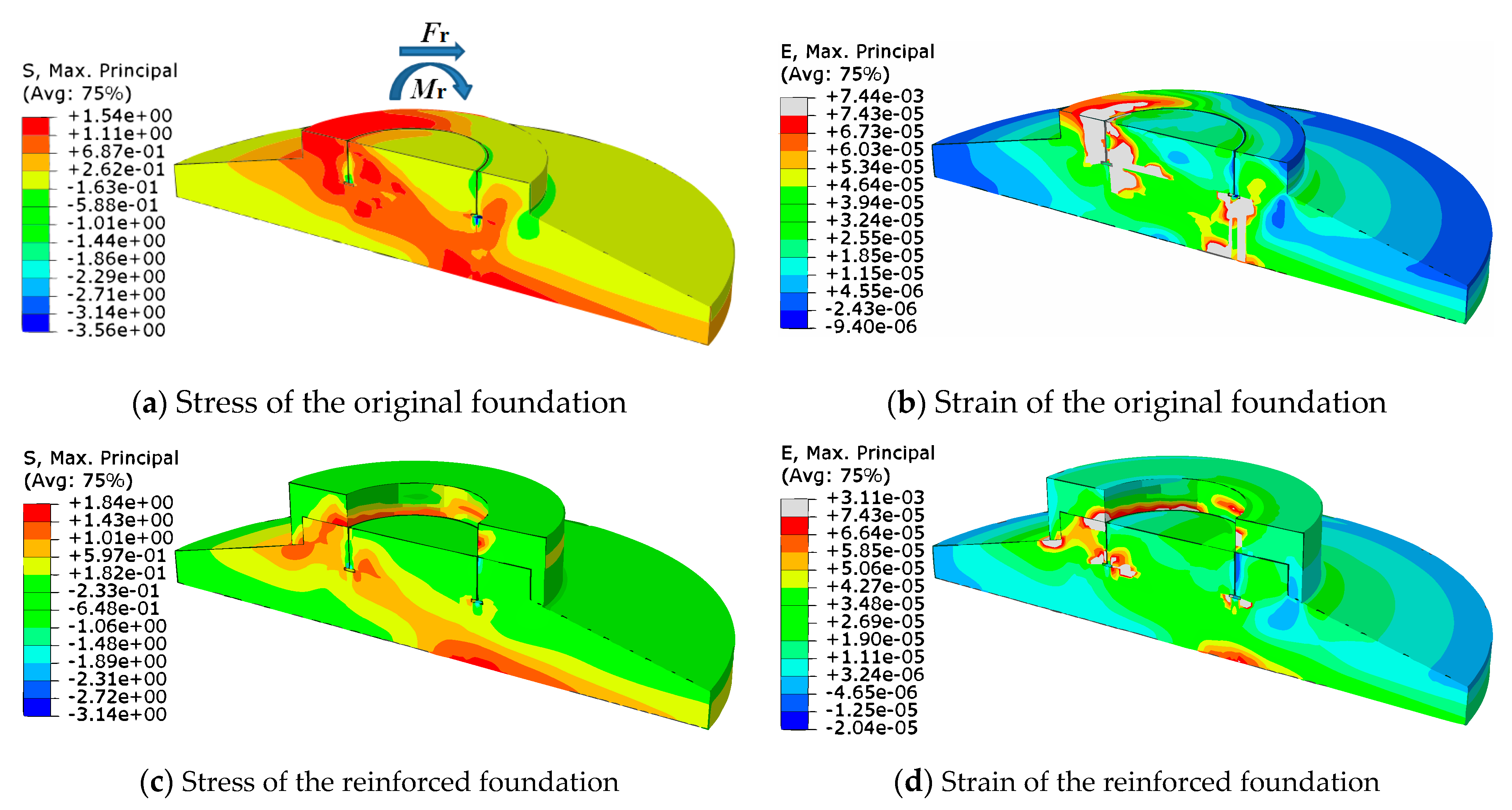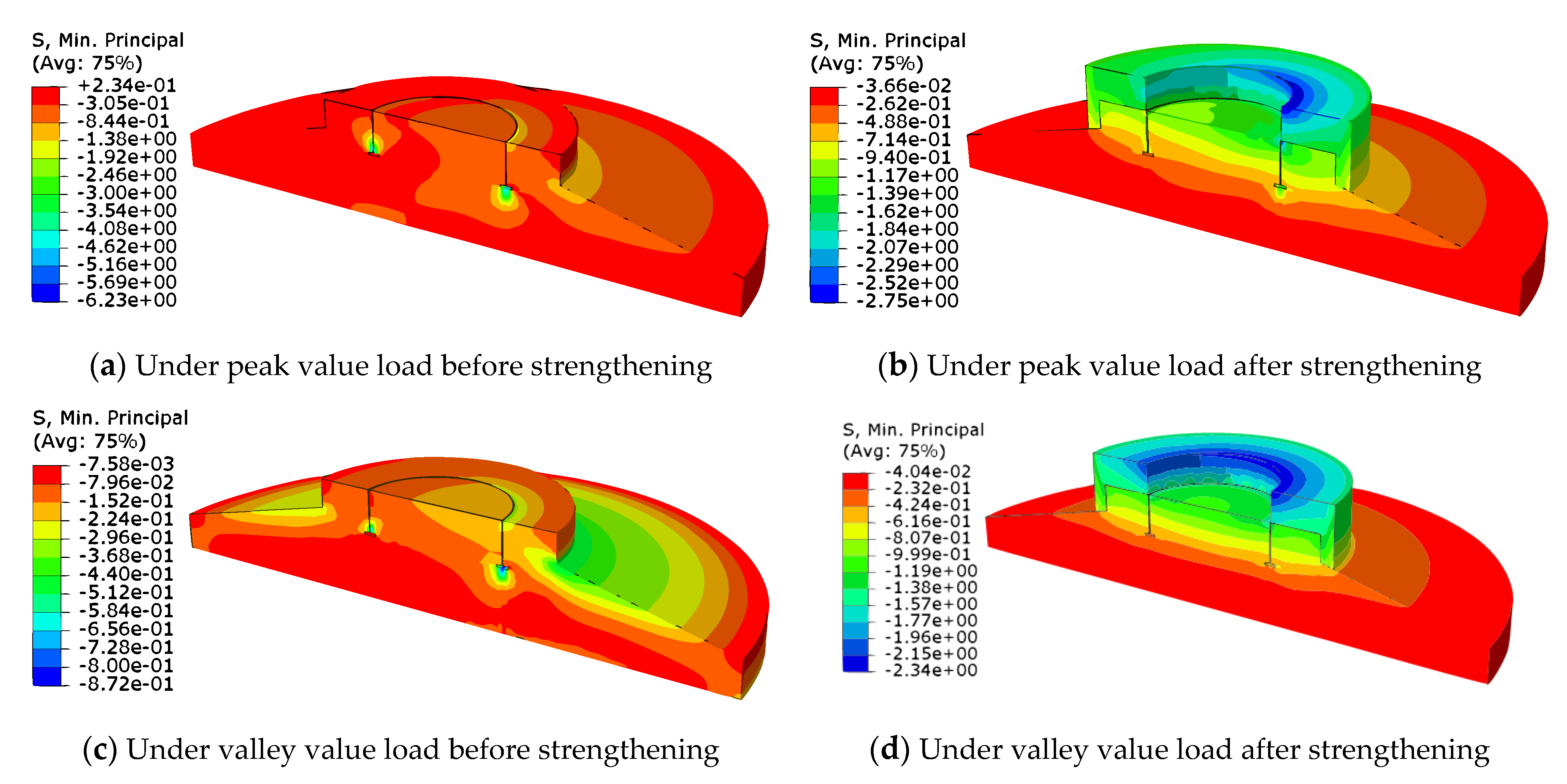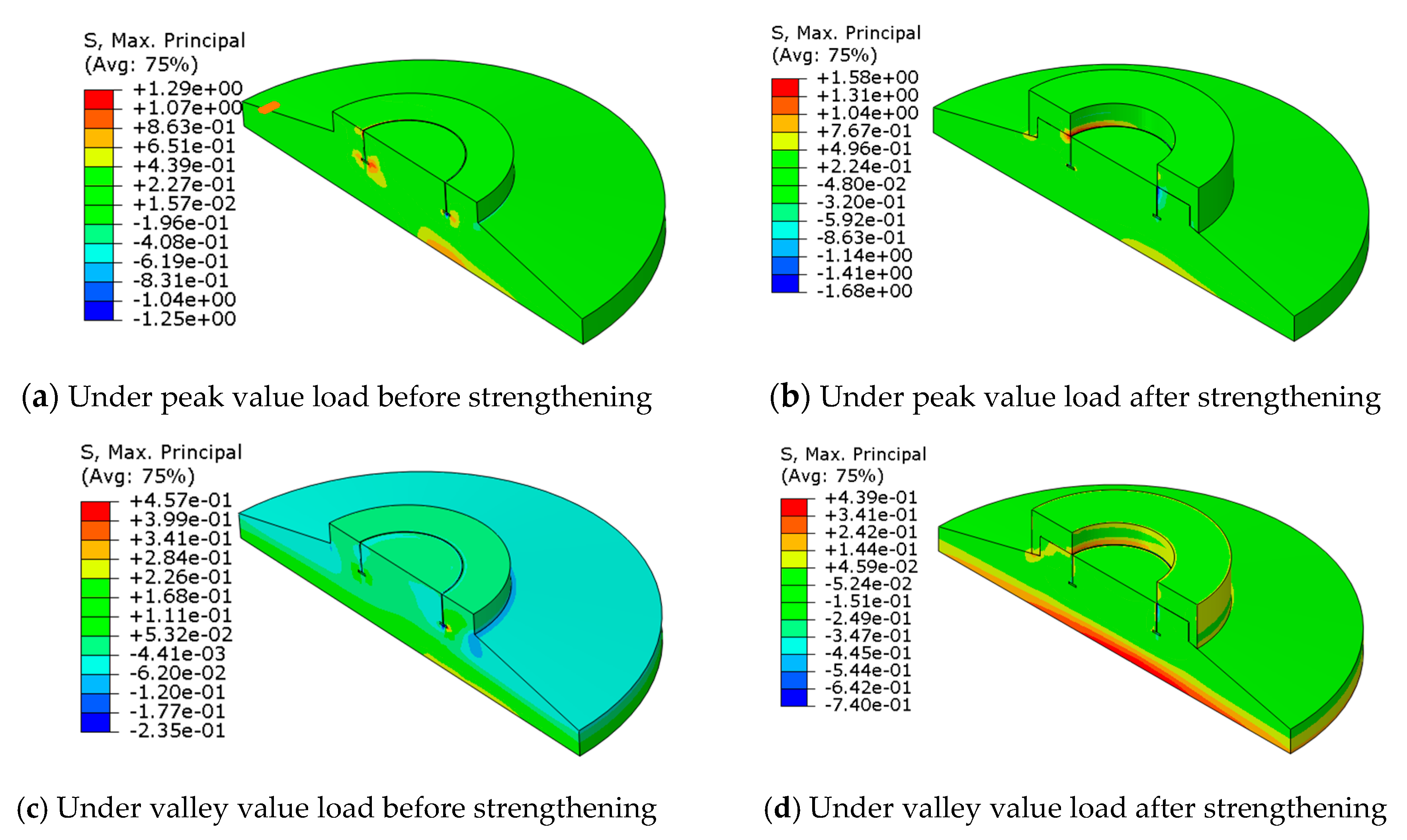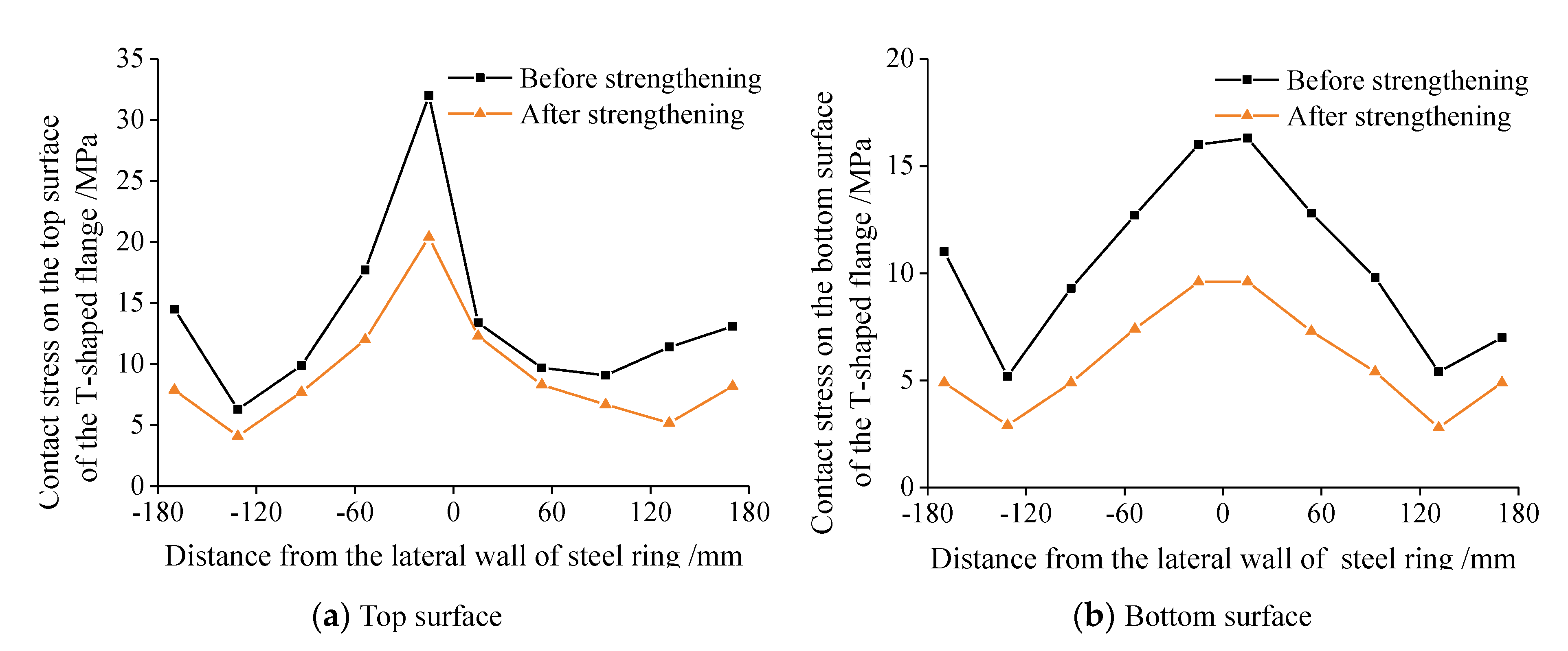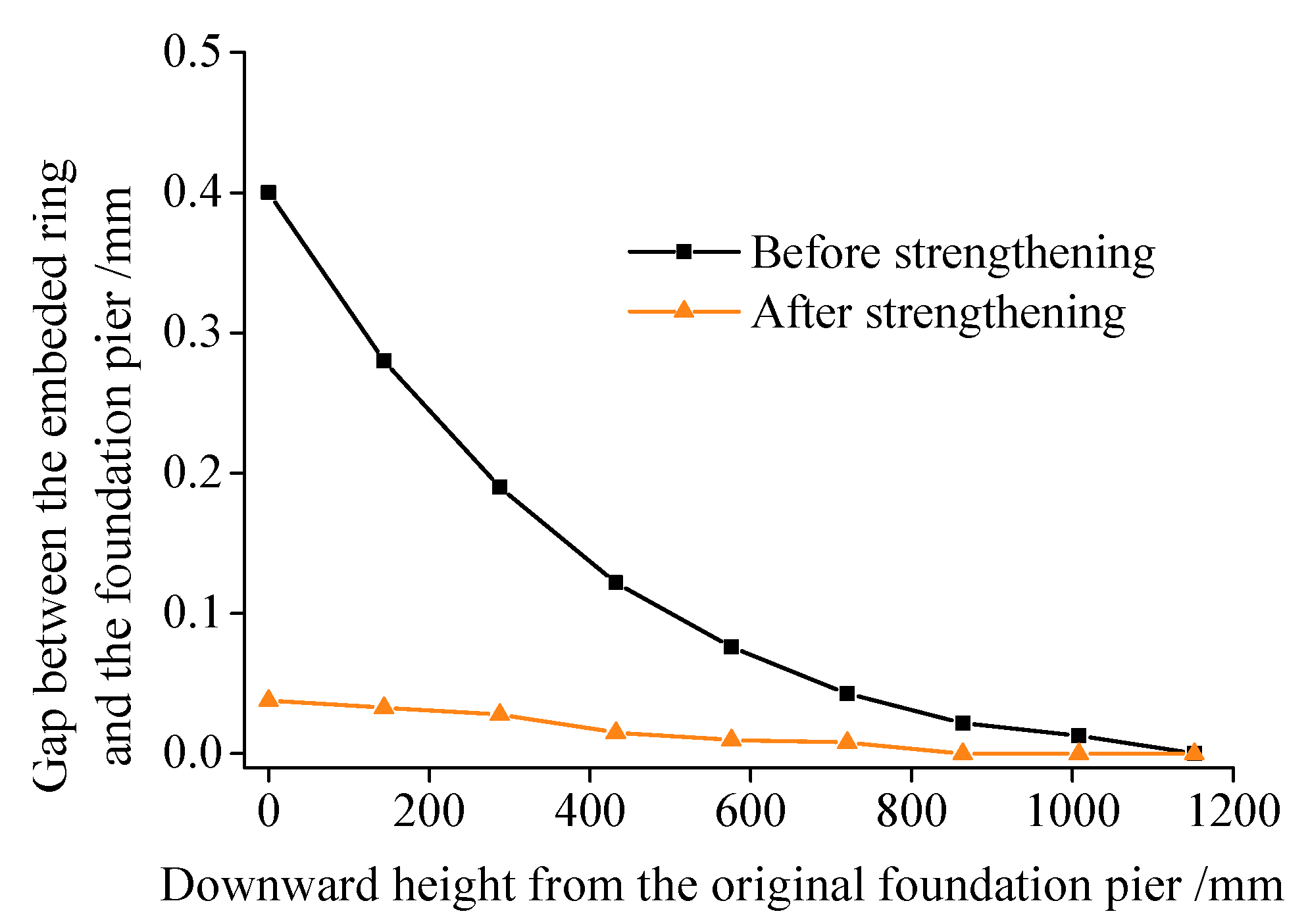In recent years, in order to solve the shortage of fossil energy and the environmental pollution problems, wind energy has been developed rapidly in the world due to its renewable and pollution-free characteristics. The global cumulative installed wind capacity has already summed up to 650 GW by the end of 2019. In the early development stage of wind power industries, the embedded steel ring is widely applied to connect the upper steel tower with the bottom concrete foundation for the wind turbine system because of its properties such as easy installation and adjustment. At that moment, the unit capacity of wind turbine is relatively small, and hence the bottom forces transferred from the steel tower to the concrete foundation pier are also relatively small. Therefore, although there is not enough constraint stiffness of the steel ring in the concrete foundation due to its shallow embedded depth, this kind of connection type could ensure the reliability of the foundation. However, with the increasing of the wind turbine capacity and the tower height, the bottom forces transferred from the tower to the foundation pier are getting larger and larger. Different damage types occurred on many wind turbine foundations with embedded steel rings (as shown in
Figure 1), such as concrete cracking of the foundation surface and concrete crushing around the steel ring [
1]. According to the results of the field survey, the damage phenomena of embedded-ring foundations are very common when the wind turbine capacity is greater than 2 MW and the tower height is greater than 80 m. In fact, the damage phenomena of embedded-ring foundations have been concerned by some researchers in recent years. Rapport [
2] summarized the damage forms of embedded-ring wind turbine foundations and analyzed the damage causes such as structural defects, unreasonable structural design, dynamic loading, and poor-quality concrete. Currie et al. [
3] analyzed the failure mechanisms of embedded-ring foundation and proposed several inexpensive sensors to continuously monitor real-time displacements in embedded-ring wind turbine foundations. Kang et al. [
4] developed the finite element model of embedded-ring wind turbine foundation and analyzed the influence of the gap between the steel ring and the concrete foundation on its local damages. Currie et al. [
5] presented a wireless monitoring technique by measuring the displacement patterns of the embedded ring of wind turbine to alert its significant movements. Bai et al. [
6] investigated the fatigue behavior of concrete in the anchorage area of the foundation under the equivalent fatigue loads. Liu and Yang [
7] carried out numerical analyses and found that the height of embedded ring and the arrangement of steel bars around the embedded ring have an influence on the stress distribution of foundation concrete. Lyu et al. [
8] investigated the fatigue damage mechanism of embedded-ring wind turbine foundation and results showed that the shear strength of steel bars passing through the steel ring could not meet the shear requirement between the steel ring and the foundation concrete.
In this paper, damage mechanisms of embedded-ring wind turbine foundations are analyzed and strengthening measures are evaluated by numerical analyses. The paper is organized as follows:
Section 2 analyzes structural defects of embedded-ring wind turbine foundation.
Section 3 proposes a strengthening method to improve the mechanical performance of embedded-ring foundation, which includes adding welded studs, circumferential prestressing, and increasing the embedded depth of the steel ring.
Section 4 describes numerical modeling details of the study case.
Section 5 reports the numerical results and evaluates the strengthening method. Finally, some conclusions are discussed in
Section 6.
